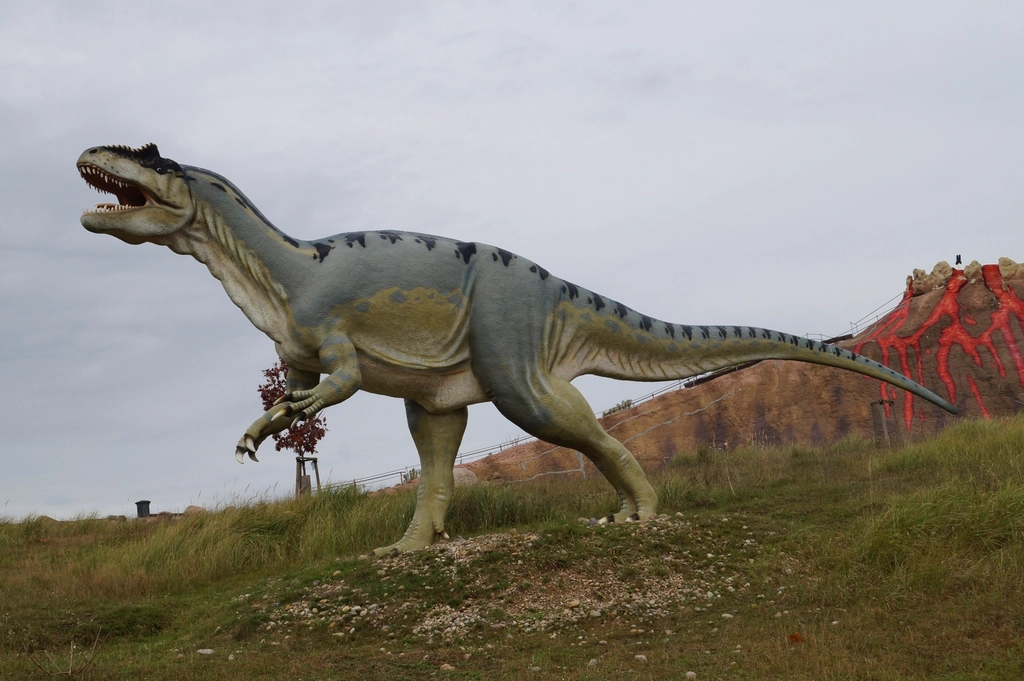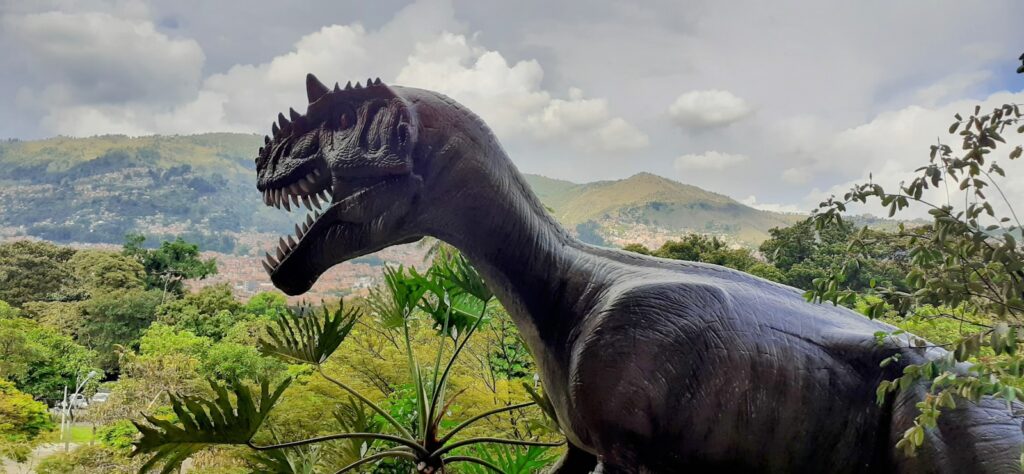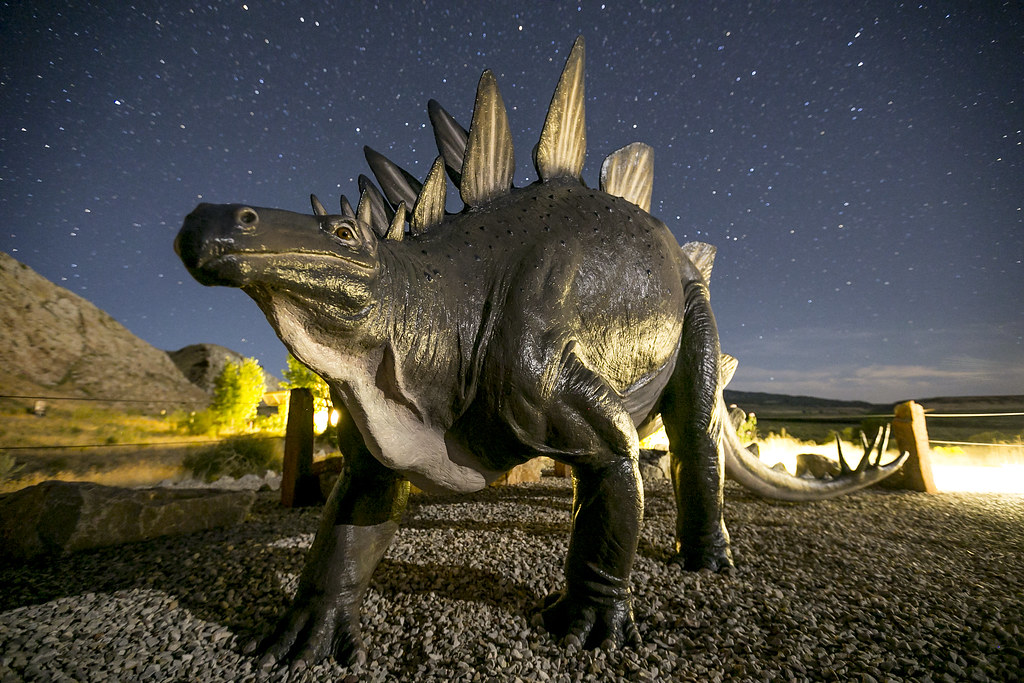Deep in the heart of Egypt’s Western Desert, where ancient sands have preserved secrets for millions of years, paleontologists made a discovery that would completely rewrite our understanding of prehistoric life. The Bahariya Formation, a geological treasure trove buried beneath countless dunes, held fossils so extraordinary that they challenged everything scientists thought they knew about dinosaur evolution and distribution. This wasn’t just another fossil find – it was a window into a lost world where giants roamed the African continent, leaving behind evidence of an ecosystem so diverse and complex that it rivals any modern tropical paradise.
The German Explorer Who Started It All
Ernst Stromer von Reichenbach was a man ahead of his time, venturing into the scorching Egyptian desert in the early 1900s when most paleontologists were focused on the American West. His expeditions to the Bahariya Oasis between 1911 and 1914 would uncover fossils that seemed almost too fantastic to be real. Stromer’s team discovered massive vertebrae, towering limb bones, and skull fragments that suggested dinosaurs of unprecedented size and diversity once called Egypt home.
The German paleontologist’s meticulous documentation and bold theories about African dinosaurs were initially met with skepticism from the scientific community. However, his discoveries included what would later be recognized as some of the most significant dinosaur finds in history. Unfortunately, tragedy struck when Allied bombing during World War II destroyed many of Stromer’s original specimens housed in Munich’s museum, leaving behind only drawings and notes as proof of these incredible creatures.
Spinosaurus: The River Monster That Defied Classification
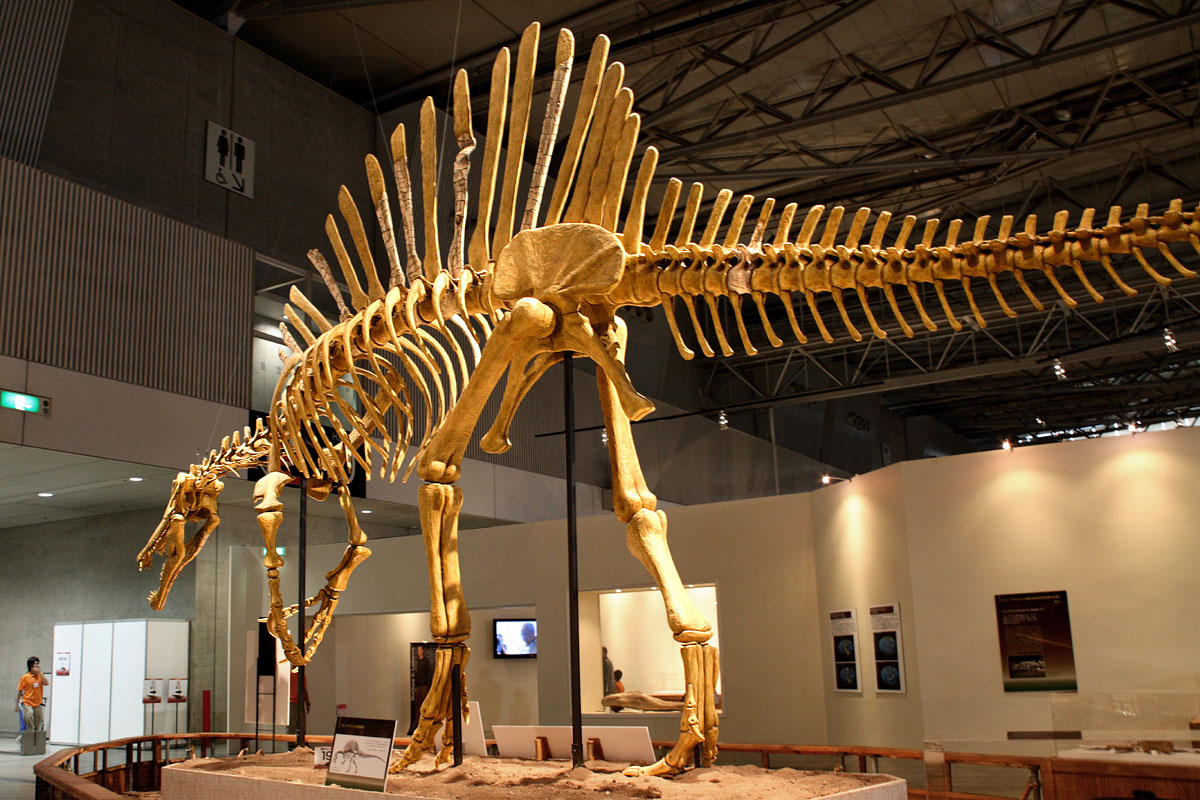
Among Stromer’s most remarkable discoveries was Spinosaurus, a predator so bizarre that it seemed to belong more in the water than on land. Standing potentially 50 feet long and weighing up to 20 tons, this wasn’t your typical meat-eating dinosaur. Its most distinctive feature was an enormous sail-like structure on its back, supported by neural spines that could reach six feet in height.
What truly set Spinosaurus apart was its crocodile-like skull, perfect for catching fish in the ancient river systems that once crisscrossed North Africa. Recent discoveries have revealed that this massive predator had paddle-like feet and dense bones – adaptations that suggest it was actually semi-aquatic, spending much of its time in the water. This revelation shattered the traditional image of large theropods as purely terrestrial hunters, opening up entirely new possibilities for dinosaur behavior and ecology.
The Carcharodontosaurus: Africa’s Answer to T-Rex
If Spinosaurus was the aquatic nightmare of ancient Egypt, then Carcharodontosaurus was its land-based counterpart. This colossal predator, whose name means “shark-toothed lizard,” possessed some of the largest skulls ever discovered in a carnivorous dinosaur. Measuring up to 45 feet in length, it roamed the same landscapes as Spinosaurus, creating one of the most dangerous predator combinations in Earth’s history.
The discovery of Carcharodontosaurus teeth and skull fragments revealed a predator equipped with razor-sharp, serrated teeth designed for slicing through flesh and bone. Unlike the fish-eating Spinosaurus, this monster was built for hunting large prey, possibly even other dinosaurs. The sheer size of its skull suggested a bite force that could crush bones, making it one of the most formidable predators to ever walk the Earth.
Bahariasaurus: The Mysterious Giant That Vanished
Perhaps no dinosaur from Egypt’s ancient past remains as enigmatic as Bahariasaurus, a massive theropod known only from fragmentary remains discovered by Stromer’s team. This mysterious giant, estimated to have reached lengths of up to 40 feet, represents one of paleontology’s greatest frustrations – a creature so tantalizing yet so incomplete that its true nature remains hotly debated among scientists.
The few fossils attributed to Bahariasaurus suggest a unique predator that doesn’t fit neatly into any known dinosaur family. Some researchers believe it may have been related to the abelisaurids, a group of predators known from South America and Madagascar. Others argue it represents an entirely new lineage of African theropods, evolved in isolation on the ancient continent. The destruction of Stromer’s original specimens during World War II means we may never fully understand this prehistoric enigma.
The Paralititan: Egypt’s Gentle Giant
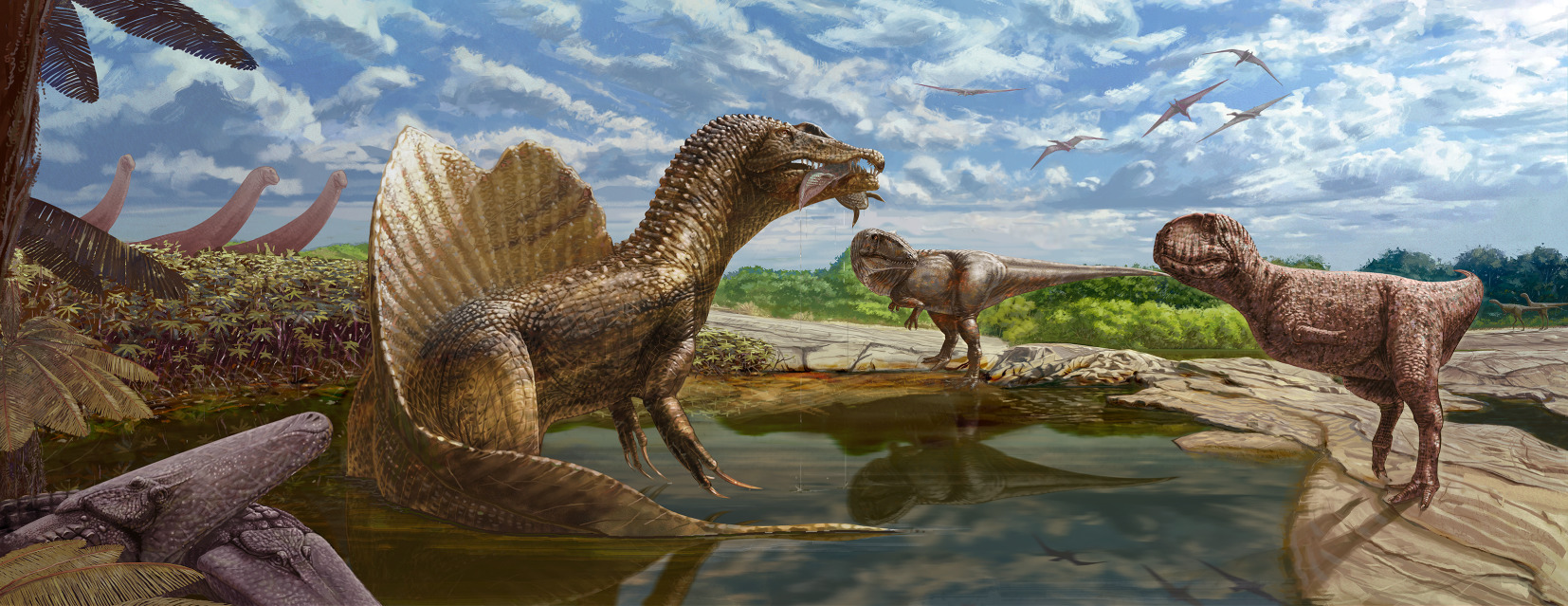
Not all of Egypt’s ancient inhabitants were fearsome predators. The discovery of Paralititan, a massive sauropod dinosaur, revealed that peaceful giants also called this region home. This herbivorous titan stretched an estimated 80 feet in length and weighed as much as 60 tons, making it one of the largest dinosaurs ever discovered on the African continent.
Paralititan’s name, meaning “tidal giant,” reflects the coastal environment where it lived and died. These enormous creatures spent their days browsing on primitive flowering plants and conifers, using their incredibly long necks to reach vegetation that other dinosaurs couldn’t access. The discovery of Paralititan fossils alongside marine creatures suggests these giants lived in a lush, subtropical environment very different from today’s desert landscape.
The Ancient Ecosystem: A Prehistoric Paradise
The dinosaurs of ancient Egypt didn’t exist in isolation – they were part of a complex ecosystem that included crocodiles, fish, marine reptiles, and primitive mammals. The Bahariya Formation preserves evidence of a vast river system that supported an incredible diversity of life approximately 100 million years ago. This wasn’t the harsh desert we know today, but a lush, tropical environment teeming with life.
Ancient Egypt’s rivers were populated by massive crocodiles that grew to lengths rivaling modern saltwater crocodiles. Primitive sharks and rays inhabited the coastal waters, while pterosaurs soared overhead, hunting for fish and small prey. The presence of so many large predators suggests that the ecosystem was incredibly productive, supporting multiple apex predators in the same environment. This remarkable biodiversity rivals that of any modern ecosystem, demonstrating just how rich and complex prehistoric life could be.
The Destruction of Stromer’s Collection
The tragic loss of Stromer’s original specimens during World War II represents one of paleontology’s greatest disasters. On the night of April 24, 1944, Allied bombs destroyed the Bavarian State Collection in Munich, reducing decades of irreplaceable research to ash and rubble. Among the casualties were the type specimens of Spinosaurus, Carcharodontosaurus, and Bahariasaurus – the very fossils that proved these incredible creatures once existed.
This devastating loss meant that for decades, scientists had only Stromer’s detailed drawings and notes to work with. The absence of physical specimens made it nearly impossible to study these dinosaurs in detail or to compare them with new discoveries. It wasn’t until the 1990s that paleontologists began returning to Egypt to search for new fossils, hoping to replace what had been lost and to continue Stromer’s groundbreaking work.
The Modern Renaissance: New Expeditions to Egypt
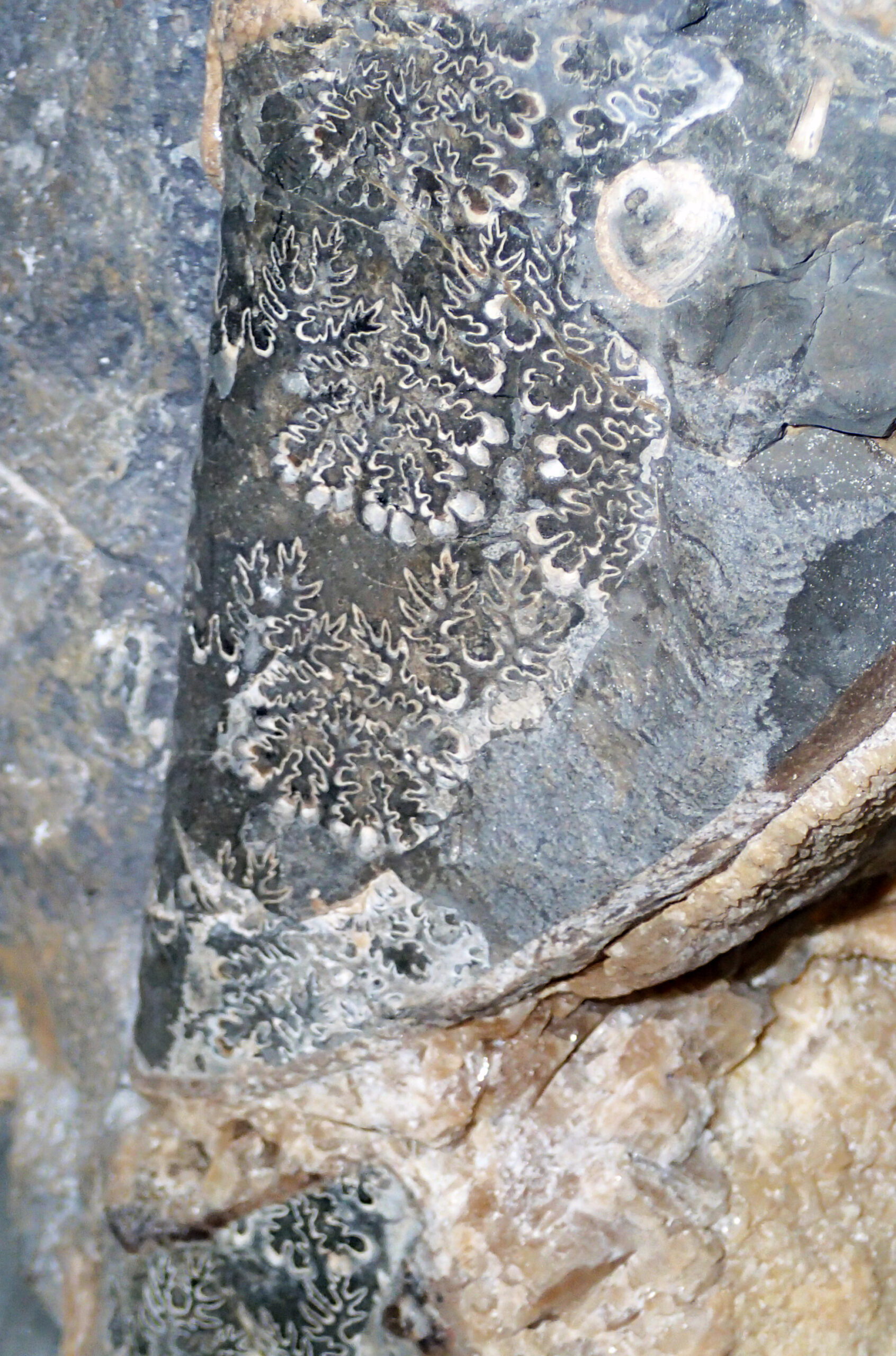
The turn of the 21st century marked a renaissance in Egyptian paleontology, with new expeditions returning to the sites where Stromer had made his revolutionary discoveries. Led by paleontologists like Josh Smith and Matthew Lamanna, these modern fossil hunters brought advanced technology and techniques to the ancient fossil beds. Their work has not only confirmed many of Stromer’s findings but has also revealed new species and provided fresh insights into the ancient ecosystem.
These contemporary expeditions have benefited from GPS technology, detailed geological mapping, and sophisticated laboratory analysis techniques that weren’t available to Stromer’s generation. The result has been a flood of new discoveries that have helped scientists piece together a more complete picture of Egypt’s prehistoric past. From new species of crocodiles to additional dinosaur remains, these modern finds have validated Stromer’s vision of Egypt as a paleontological treasure trove.
The Spinosaurus Revolution: Rewriting the Rules
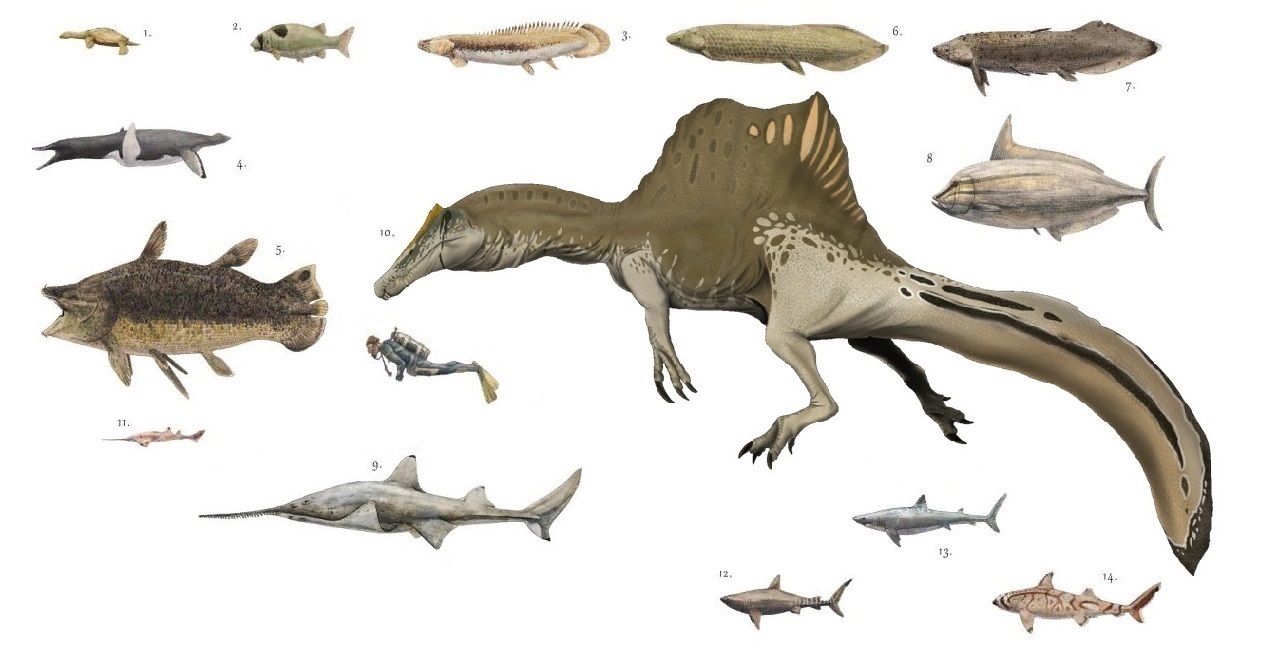
Recent discoveries have completely revolutionized our understanding of Spinosaurus, transforming it from a mysterious land predator into the first known semi-aquatic dinosaur. The 2014 discovery of additional Spinosaurus remains in Morocco, combined with advanced computer modeling and analysis, revealed that this massive predator was adapted for life in the water. Its shortened hind legs, paddle-like feet, and dense bones all pointed to an aquatic lifestyle that no one had imagined possible for such a large theropod.
This revelation sent shockwaves through the paleontological community, challenging fundamental assumptions about dinosaur behavior and evolution. The idea that a 50-foot predator could be primarily aquatic opened up new possibilities for understanding prehistoric ecosystems. It also highlighted just how much we still don’t know about dinosaur diversity and adaptation, proving that even after more than a century of study, these ancient creatures can still surprise us.
The Geological Time Machine: Reading Ancient Environments
The rocks of the Bahariya Formation serve as a geological time machine, preserving not just dinosaur bones but also evidence of the ancient climate and environment. Sedimentary layers reveal a landscape dominated by rivers, deltas, and coastal plains, with seasonal flooding that created ideal conditions for fossil preservation. The presence of marine fossils alongside dinosaur remains tells the story of a dynamic environment where land and sea interacted in complex ways.
Scientists can read the chemical signatures in these ancient rocks like pages in a book, revealing details about temperature, rainfall, and atmospheric composition from 100 million years ago. This information helps reconstruct the world in which these dinosaurs lived, providing context for their evolutionary adaptations and behaviors. The integration of geological and paleontological data has created a remarkably detailed picture of this ancient ecosystem, showing how life and environment shaped each other over millions of years.
The Predator Paradox: How Multiple Giants Coexisted
One of the most intriguing aspects of Egypt’s ancient ecosystem is how multiple massive predators managed to coexist in the same environment. The presence of Spinosaurus, Carcharodontosaurus, and Bahariasaurus in the same geological formation raises fascinating questions about resource partitioning and ecological niches. How did these giants avoid competing with each other for food and territory?
The answer likely lies in their different feeding strategies and habitat preferences. Spinosaurus was primarily piscivorous, hunting fish and other aquatic prey in rivers and coastal waters. Carcharodontosaurus was built for hunting large land animals, possibly including sauropods and other dinosaurs. This division of resources would have allowed both species to thrive in the same general area without direct competition, similar to how modern predators in Africa partition resources to avoid conflict.
The Technology Behind the Discoveries
Modern paleontology has been revolutionized by technological advances that allow scientists to extract far more information from fossils than ever before. CT scanning reveals internal bone structures without damaging precious specimens, while chemical analysis can determine diet, migration patterns, and even body temperature. These tools have been crucial in understanding the Egyptian dinosaurs, particularly in the absence of many original specimens.
Computer modeling has allowed researchers to reconstruct the appearance and behavior of these ancient giants with unprecedented accuracy. By analyzing bone density, muscle attachment points, and joint articulation, scientists can create detailed models of how these dinosaurs moved and lived. This technology has been particularly important for understanding Spinosaurus, helping to confirm its semi-aquatic lifestyle and swimming abilities.
The Global Impact: Egypt’s Place in Dinosaur Evolution
The dinosaurs of Egypt have had a profound impact on our understanding of dinosaur evolution and distribution. Their discovery proved that Africa was home to unique dinosaur lineages that evolved independently from those found in North America and Asia. This challenged the old view of dinosaur evolution as a primarily Northern Hemisphere phenomenon and highlighted the importance of Gondwanan landmasses in shaping prehistoric life.
The Egyptian dinosaurs also demonstrated the incredible diversity of theropod dinosaurs, showing that these predators evolved into a wide range of ecological niches. From fish-eating semi-aquatic giants to massive terrestrial hunters, the variety of predatory strategies represented in the Bahariya Formation rivals anything found in modern ecosystems. This diversity suggests that dinosaur evolution was far more complex and innovative than previously imagined.
Conservation and Future Research
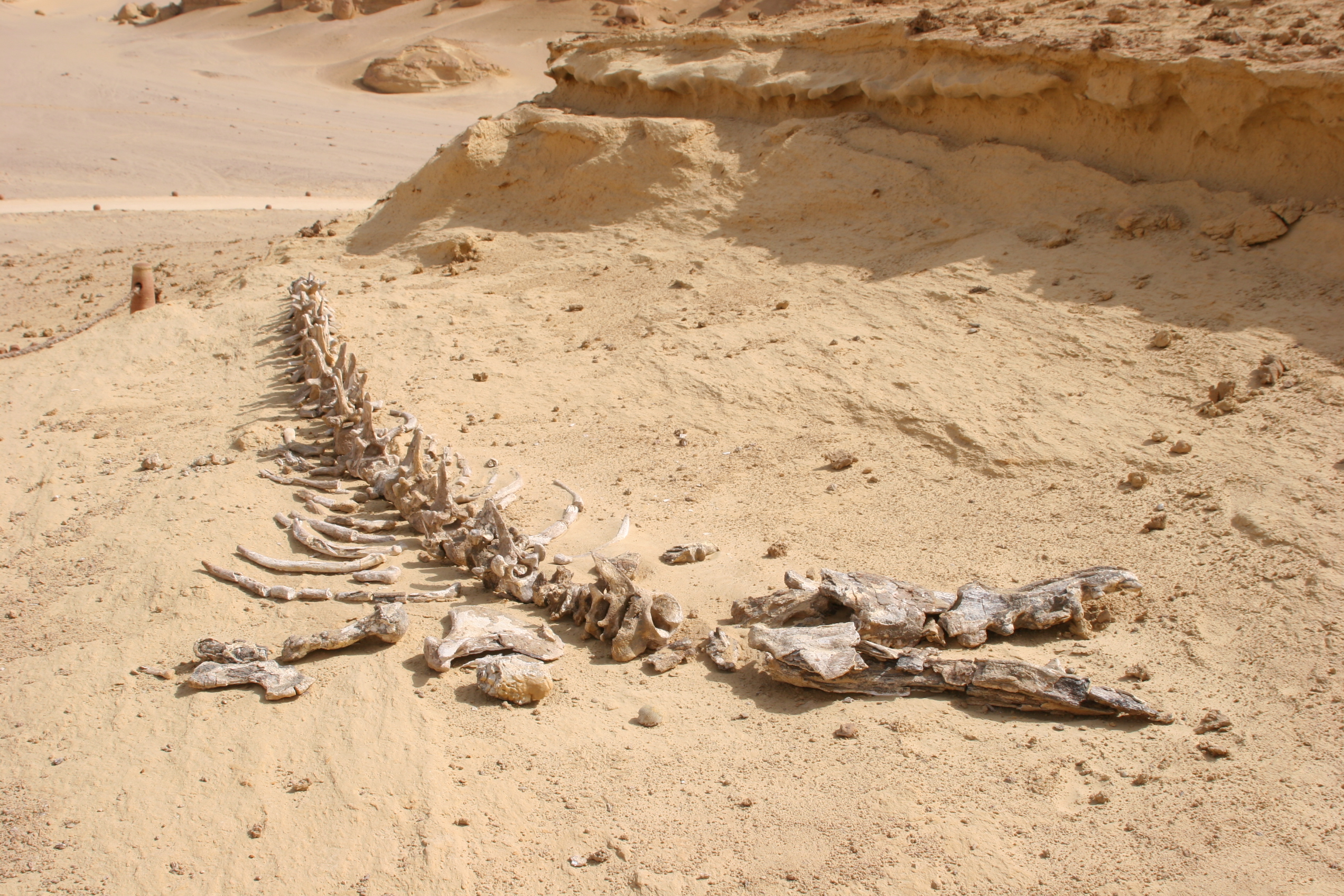
The ongoing political and economic challenges in Egypt have created both opportunities and obstacles for paleontological research. While increased security concerns have made fieldwork more difficult, growing recognition of fossils as national treasures has led to better protection and support for research. International collaboration has become increasingly important, with Egyptian scientists working alongside colleagues from around the world to study these remarkable fossils.
Future research will likely focus on finding more complete specimens to replace those lost during World War II, as well as exploring new fossil sites throughout Egypt. Advanced techniques like environmental DNA extraction and isotope analysis promise to reveal even more details about these ancient ecosystems. The development of local expertise and museum infrastructure will be crucial for ensuring that Egypt’s paleontological heritage is preserved for future generations.
The lost dinosaurs of Egypt represent more than just remarkable fossils – they’re a testament to the incredible diversity and adaptability of life on Earth. These ancient giants lived in a world so different from our own that it might as well have been an alien planet, yet they thrived in ways that continue to amaze and inspire scientists today. Their discovery reminds us that our planet’s history is far more complex and fascinating than we ever imagined, and that there are still countless secrets waiting to be uncovered in the rocks beneath our feet. What other incredible creatures might be waiting for us to find them, hidden in the sands of time?

